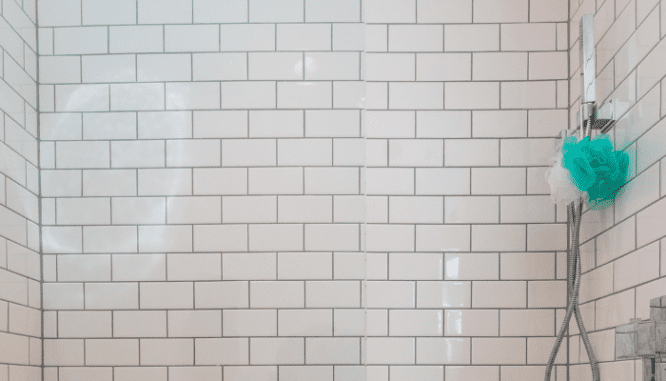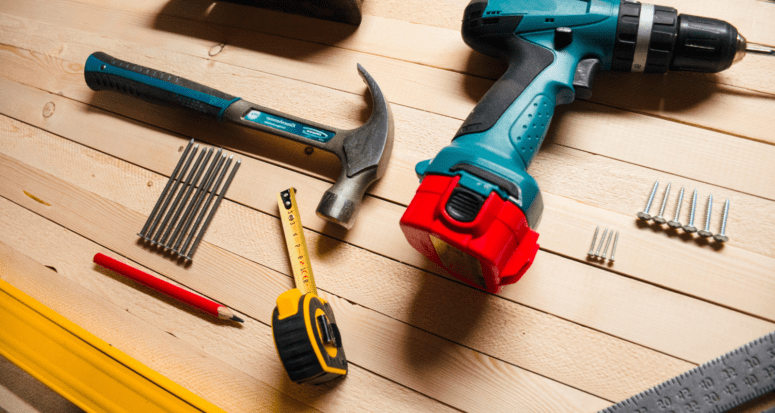What to Remodel Before Selling Your Home: 9 Light-Lift Projects
- Published on
- 6 min read
-
 Erika Riley, Contributing AuthorClose
Erika Riley, Contributing AuthorClose Erika Riley Contributing Author
Erika Riley Contributing AuthorErika Riley is a journalist who has written about home design and real estate in a variety of outlets primarily in New York City. Now based in the D.C. Metro area, Erika enjoys painting her furniture too many times and finding the prettiest townhouses to walk by.
-
 Richard Haddad, Executive EditorClose
Richard Haddad, Executive EditorClose Richard Haddad Executive Editor
Richard Haddad Executive EditorRichard Haddad is the executive editor of HomeLight.com. He works with an experienced content team that oversees the company’s blog featuring in-depth articles about the home buying and selling process, homeownership news, home care and design tips, and related real estate trends. Previously, he served as an editor and content producer for World Company, Gannett, and Western News & Info, where he also served as news director and director of internet operations.
As you prepare to list your home on the market, you’re likely facing two of the most common questions home sellers ask — can I get more money for my house if I remodel? And if so, how do I decide what to remodel before selling?
To untangle this conundrum, HomeLight asked top real estate agent MaryBeth Harrison of Dallas, Texas for her expert advice on which projects are worth doing.
Harrison advises sellers that buyers are touring houses hoping to see themselves living there. While there are some well-seasoned buyers who will wonder when the roof was last replaced or how run-down the HVAC system is, most buyers will simply be searching for a move-in ready space.
Many of these projects have great return on investment, but they also may not be the flashy changes you’re thinking of. That said, Harrison estimates that some of her clients have added $25,000 to $50,000 to their home sale price by following these tips!
So here are 9 renovations to tackle — without much hassle — before you list, plus advice on when to let a dated house sell for what it is.

1. Paint neutral, uniform colors
Paint is one of the easiest and most effective ways to change the look and value of your home. Because buyers are trying to picture themselves living in your home, Harrison recommends sticking with neutral colors throughout. There’s a reason why model homes use lots of white and beige, she says: “so that buyers can see a blank canvas.”
“It’s fine when there’s an accent wall or whatever, that’s different,” Harrison advises. “But when every room’s a different color… that’s cheap to fix with paint.”
While your children’s rooms might work in the bright greens and pinks they’re currently painted in, not every buyer has children. And for that matter, some buyers with children still might not want pink and green rooms.
Painting your interior is a fairly simple renovation to your house, and while buyers could do it once they move in, the project might seem much bigger to them. So hire a painter or get some tarps and do it yourself.
And this advice is consistent throughout all markets. In our Top Agent Insights Report, 57.83% of surveyed real estate agents advise sellers to paint their interior before listing. Wondering what color to grab at your local hardware store? Try agent-recommended “Agreeable Gray” by Sherwin-Williams, or “Revere Pewter” by Benjamin Moore. (In other words, embrace the greige.)
Average project cost: $954 – $2,893, depending on location, type of paint, and labor.
2. Rip up old carpet and keep flooring consistent
One of the more heavy-duty home renovation projects you can undertake before selling is replacing your flooring. This might not be necessary for your entire house: mainly, Harrison advises this renovation if you have several different kinds of flooring throughout your home.
“I walked into another listing and within my eyesight, there were four different types of flooring. That’s too much,” Harrison says. “So I think consistency is the goal here; let’s get a uniform look.”
Many buyers expect hardwood floors or premium vinyl nowadays, but just because you have carpet doesn’t mean you need to shell out a lot of money. The most important thing to do is get rid of any carpeting that is obviously dated. This includes shag carpeting, carpeting in odd colors, or very stained and worn carpeting. You can replace the carpeting with another, more neutral option.
But try to fix the most problematic areas that you can, or at the least hire a professional carpet cleaner.
Average project cost:
To install carpet: $789 – $2,794
To install hardwood floors: $2,493 – $6,754
To install vinyl floors: $800 – $2,900

3. Add some simple greenery
When it comes to selling a house, curb appeal is very real. It’s not often you get the big picture of your house from an outsider’s perspective. So Harrison recommends going across the street and really taking a look at your home’s exterior. Ask yourself: Is it inviting? Would you want to buy this house?
Harrison advises adding shrubs or other greenery before listing. If you don’t have much of a green thumb, you can also opt for foliage in potted plants.
“During winter, of course, everyone’s yard is dead, and I get that,” Harrison explains. “But especially in the spring and fall, put some color out there even if it’s just in pots, just to give me something inviting.”
Average project cost: As low as $20 for potted plants, as high as several hundred dollars for shrubs.
4. Perform a pre-inspection and fix any small issues
Typically, inspectors perform their routine inspections when a seller has accepted a buyer’s offer, but before the deal is finalized. This allows the buyers to learn about any major fixes that the property needs. They can also negotiate with the seller about the purchase price depending on how serious the fixes are.
To save yourself future negotiations and work, take a good look around the interior and exterior of your house and search for any imperfections, such as rotted wood, water damage, and electricity problems. Some of these problems might be easy to fix, while others might require a professional. You don’t have to fix every single thing, but being proactive certainly helps.
“So let’s try and get rid of some of that conversation before it even starts,” Harrison says. “I think people sometimes just don’t even walk around their house very often.”
Average project cost: $0 for a self-inspection, about $400 for a formal pre-inspection.

5. Make your kitchen bright and white with paint and new hardware
Harrison likes to look at model homes to see what’s currently selling. One of the things you’ll see a lot nowadays in model homes is sleek, white kitchens. They often have a wide open feel to them, with light-colored countertops and backsplashes. The cabinets are typically white, but can also be a matte color like forest green or cerulean.
Getting all new cabinetry is a huge hassle, but painting can be a quicker fix. Keep a monochromatic color scheme in mind and opt for a white paint if you have other colors throughout your kitchen. Take off the hardware before you paint, and consider replacing it with matte black fixtures or minimalistic hand-pulls.
“What the buyers are looking for today is white and clean, they just want clean,” Harrison advises. “It doesn’t all have to be stark white. But they just want a clean palette.”
Average project cost: $382 – $1,064, depending on equipment and labor, plus $2-$20 for each piece of hardware.
6. Replace dated countertops and appliances
The kitchen is one of the most important parts for a home, so here’s another renovation you might want to undertake. Dated appliances and countertops are two big red flags for buyers. Replacing countertops often seems like a hefty and expensive task, and can drastically change the look of your kitchen.
Similar to cabinets, buyers are looking for a bright, monochromatic look. Harrison advises against the brown and multi-colored granite that has been popular within the last 15 years or so. If you’re going to go new, she advises a gray or white countertop made of granite, marble, or quartz.
You can also opt for butcher block countertops for a contemporary feel. They often come at a cost-effective price, too.
However, if your entire kitchen is fairly dated, Harrison recommends holding off on the kitchen renovation. New countertops will stand out like a sore thumb against old cabinetry, flooring, and appliances. Ultimately, these upgrades won’t get you your money back.
“[A client] put the granite counter tops on … but they left the old, white appliances,” Harrison describes. “So now, it’s just glaring how old those appliances are, right? Because you’ve got an updated kitchen to a point.”
Average project cost: $40 – $100 per square foot for new countertops depending on material, and $1,360 – $19,050 for appliances depending on brand.
7. Hire a professional cleaner for your bathroom
Oftentimes, it’s things like dirt, grime, and mold that we grow desensitized to in our own house. But a buyer walking in won’t know what to expect, and will definitely see every inch of mildew in your bathroom. Because it’s one of the wettest areas of the house, it’s also one of the dirtiest.
Harrison recommends doing a very thorough cleaning of your bathroom(s), or hiring a professional cleaner to do so. It’ll make a difference to buyers during your tours. If you’re not sure you need it, ask yourself: do you know what color your grout originally was?
Average project cost: $0 for self-clean with already-owned supplies, or $70 – $85 for a professional.

8. Replace old tile and linoleum, or paint what you can’t replace
Bathrooms, like kitchens, can be sore spots for buyers. They quickly get dirty, have high use, and are easily outdated. Harrison says there’s nothing wrong with leaning into a true vintage bathroom, but to try to clean up some of the tile where you can.
Many older bathrooms have tiled baths and showers with small, individual tiles, often in funky colors like pinks, reds, blues, and purples. Retiling a shower can be a long, tedious job that often requires a professional. But painting over that tile is a very acceptable way to bring your bathroom into the 21st century.
“It’s not my favorite choice to repaint a bathroom tile, but I’ve had clients do it and it comes out really nice,” Harrison says. “They take that vintage tile that was purple or pink or whatever — they just paint it over white. And at least it deals with the problem.”
Average project cost: $15-50 per gallon of paint, or $1,000 – $3,000 for retiling.
9. Cut down on mess and unnecessary items
Home stagers can be expensive and time-consuming. Know that you don’t have to stage your home before you list, but there are some things that you can do before your photos and before any tours or open houses to keep your place looking its best.
Harrison recommends taking down some of your decorations so the house still looks lived in but not too personal. Remove any small appliances from the kitchen counters, or any extra furniture that makes it awkward to walk around. Find a place in your house like a basement or garage where you can keep all the extra stuff until it’s time to move, or until you need it again.
“The home may not be updated — and I’ve sold plenty of homes that needed everything — but they looked nice. When you walked in, it was clean, and it was open,” Harrison explains. “A buyer could start imagining what it would look like when they moved in.”
Average project cost: $0
Alternative: Do nothing
Sometimes, the best thing you can do is nothing at all. Taking on too many home projects can be incredibly time consuming and costly. Often, they don’t lead to the best return on investment, either. In a seller’s market, it’s much easier to sell your house in “as-is” condition. But even outside of a seller’s market, there are always buyers looking for fixer-uppers or more dated homes for them to put their unique stamp on.
“There are times when you can’t do enough, so therefore you don’t do anything,” Harrison says. “I just sold a house for people who had lived there for 46 years. I think maybe they replaced the carpet at some point, but that was it. But the house was clean, it was neat, and it sold with multiple offers in minutes.”
So if you have a few problem areas throughout your house or want to bolster a big return on investment, then undertaking some of these projects is up your alley. But if your home needs major upgrades, sometimes it’s best to pass.
Average project cost: $0
Header Image Source: (Eugen Str / Unsplash)
